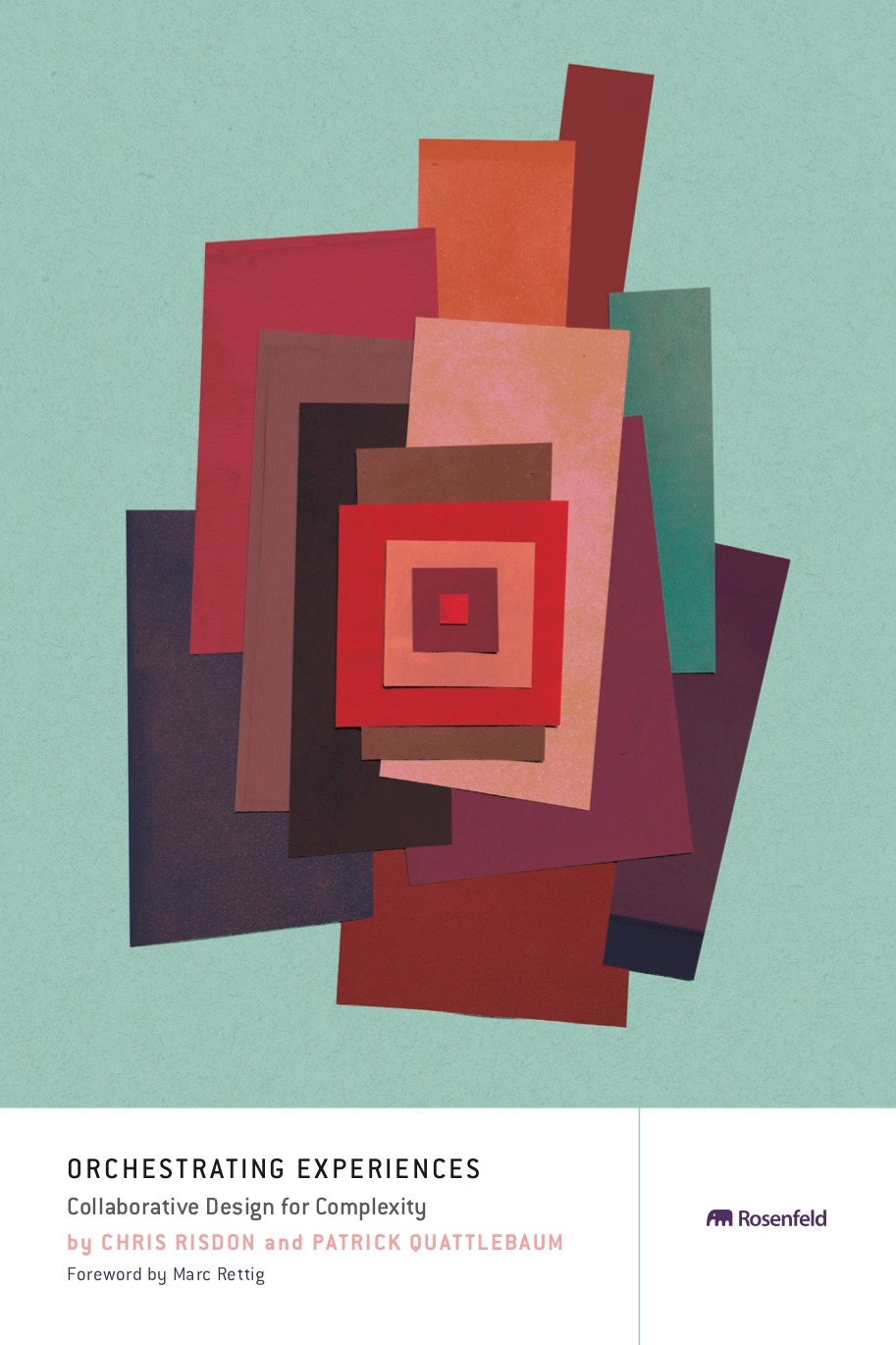Chris Risdon is Director of Design for a peer-to-peer carsharing service, Getaround. Previously, Chris was Head of Behavioral Design for Capital One and a Design Director for Adaptive Path, the pioneering experience design consultancy. Chris has introduced and advanced new methods in design, teaching thousands of design professionals and students. He holds an MFA in design from the Savannah College of Art and Design and is an adjunct professor at the California College of the Arts, teaching interaction design and service design to the next generation of designers. Chris is co-author of the upcoming Rosenfeld Media book, Orchestrating Experiences: Collaborative Design for Complexity Follow him on Twitter @chrisrisdon.
23
14:00 - 17:30
Room 1Workshop
Orchestrating Experiences
Collaborative Design for Complexity
Customer experiences are increasingly complicated — with multiple channels, touchpoints, contexts, and moving parts — all delivered by fragmented organizations. How can you bring your ideas to life in the face of such complexity? Orchestrating Experiences is a practical workshop for designers struggling to create products and services in complex environments.
This workshop provides a pragmatic set of principles, methods, and advice for designing coherent, engaging end-to-end experiences. This unifying approach will ensure you keep focus on customer needs across time and space in increasingly complex design challenges, while building a culture of cross-functional collaboration.
We’ll focus on the power and peril of the touchpoint — where customers connect with your product or service. We’ll show how to map the customer journey across touchpoints and channels. We’ll explore how every occasion where your organization touches or connects with a person’s life is appropriate, relevant, meaningful, and endearing.
What You'll Learn
Learn how to examine the full view of your users’ journeys and draw a blueprint of those interactions at this full-day workshop. Learn the characteristics of touchpoints, so you can define them for your organization.
- Facilitate cross-functional collaboration to define human-centered strategies
- How to explore the ecosystem people live in and the role your product or service plays in it
- Identify and gather the inputs that make a good experience map
- Understand how time and space impact how people experience your product or service
- Get everyone involved in identifying touchpoints
- Visually describe what the user’s journey looks like
- Use mapping as a catalyst to discuss organizational goals
- Orient teams around a shared understanding of the journey
Agenda
- The context, people, and systems involved in orchestrating experiences
- Understanding touchpoints and channels
- Communicating the ecosystem
- Unifying around journeys
- Diving into experience mapping
- Mapping with your team
- The stages, emotions, and channels that affect the quality of a journey
- Using maps as a catalyst: identifying and prioritizing opportunities
- Types of artifacts and how they support your storytelling
- Ways to visually represent user data with richness, depth, and detail
- How to identify, describe, and measure touchpoints in context of the journey
24
14:30 - 15:00
Auditorium ITalk
Shaping Behavior, By Design
Technology has allowed services to have a more pervasive role in people's lives, influencing their everyday behaviors. And we are swimming in a sea of academic insights on how people make decisions and what levers influence their behavior. But what does it mean to apply these insights practically in the design of our products and services? How do we leverage new behavior change methods into our existing design workflow? How can we understand and harness machine learning and agentive technology for positive behavior change? Whether prompting a single action, or designing a whole behavior change system, what are the methods and techniques that help us design for behavior change?















